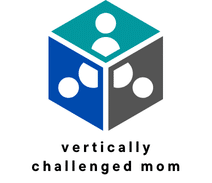How can you use AWS CloudFormation for infrastructure as code?

In a world driven by digital transformation, businesses are increasingly reliant on robust cloud infrastructure. One vital tool in your arsenal for managing cloud infrastructure is AWS CloudFormation. It allows you to define and deploy AWS infrastructure as code (IaC), enabling efficient and repeatable deployment processes. In this comprehensive guide, we will delve into how you can leverage AWS CloudFormation for your infrastructure needs, exploring its benefits, functionalities, and best practices.
Understanding AWS CloudFormation
To effectively utilize AWS CloudFormation, we must first understand its core purpose. AWS CloudFormation is an AWS service that offers a systematic way to model and set up your AWS resources. This service uses templates written in JSON or YAML to define infrastructure code (IaC). By using CloudFormation, you can automate and standardize the deployment of cloud infrastructure, ensuring consistency and reducing the likelihood of human error.
A lire en complément : Unlocking success with a digital product design studio
The power of AWS CloudFormation lies in its ability to manage a wide array of AWS services and resources. Whether you need to deploy VPCs, EC2 instances, RDS databases, or S3 buckets, CloudFormation provides a comprehensive and scalable solution. This service also integrates seamlessly with other AWS tools like the AWS CDK (Cloud Development Kit) and AWS Management Console, enhancing its versatility.
Creating CloudFormation Templates
Creating a CloudFormation template is the cornerstone of using AWS CloudFormation effectively. A CloudFormation template is a JSON or YAML file that defines the resources your stack will include. These templates can be version-controlled, enabling you to track changes, roll back to previous versions, and collaborate with team members. This approach aligns well with DevOps practices, promoting a culture of continuous integration and continuous deployment (CI/CD).
En parallèle : Grow your hacking and pentesting knowledge with top courses
When creating a CloudFormation template, it is essential to adhere to best practices to ensure clarity and maintainability. Start by breaking down your template into logical sections such as Parameters, Resources, Outputs, and Metadata. Parameters allow you to customize your stack without modifying the template. Resources define the AWS services and configurations you need to deploy. Outputs can be used to export values from your stack, enabling you to reference them in other stacks.
Utilizing a modular approach to your templates can also enhance reusability. By breaking down your infrastructure into smaller, manageable components, you can create reusable templates that can be combined to form larger stacks. This practice not only simplifies the management of your cloud resources but also promotes a cleaner and more organized codebase.
Deploying and Managing CloudFormation Stacks
Once you have created your CloudFormation template, the next step is to deploy it as a CloudFormation stack. A stack is a collection of AWS resources that you can manage as a single unit. Deploying a stack involves uploading your template to the AWS CloudFormation service, specifying any necessary parameters, and initiating the deployment process. AWS CloudFormation then takes over, provisioning and configuring the defined resources.
The stack management capabilities of AWS CloudFormation are robust and user-friendly. You can easily update stacks by modifying the template and redeploying it. CloudFormation will orchestrate the necessary changes, ensuring your resources are always in the desired state. Rollback mechanisms are also in place, allowing you to revert to a previous state if an update fails.
For more complex infrastructure requirements, you can create nested stacks, where one template calls another. This hierarchy of stacks allows you to manage dependencies and organize your cloud infrastructure more effectively. Additionally, AWS CloudFormation's integration with AWS Service Catalog enables you to manage and provision resources centrally, ensuring compliance and governance.
Leveraging AWS CDK and Terraform with CloudFormation
While AWS CloudFormation is a powerful tool in its own right, integrating it with other IaC tools like AWS CDK and Terraform can further enhance your infrastructure management capabilities. The AWS CDK allows you to define cloud infrastructure using familiar programming languages like Python, JavaScript, and TypeScript. This approach can be more intuitive for developers, enabling them to leverage their existing skills to create CloudFormation templates programmatically.
Terraform, on the other hand, is a popular open-source IaC tool that supports multiple cloud providers, including AWS. By using Terraform in conjunction with AWS CloudFormation, you can manage multi-cloud environments more efficiently. Terraform's declarative syntax complements CloudFormation's template-driven approach, providing additional flexibility and control over your cloud infrastructure.
The choice between AWS CDK, Terraform, and AWS CloudFormation depends on your specific requirements and team preferences. Each tool has its strengths, and leveraging them together can create a more robust and versatile infrastructure management solution.
Best Practices for Using AWS CloudFormation
To fully harness the potential of AWS CloudFormation, adhering to best practices is crucial. These practices ensure that your infrastructure code is efficient, maintainable, and secure.
- Use Version Control: Always version-control your CloudFormation templates. This practice enables collaborative development, change tracking, and rollback capabilities.
- Modularize Your Templates: Break down your infrastructure into smaller, reusable templates. This approach simplifies maintenance and promotes code reuse.
- Leverage Parameters: Use parameters to customize your stacks without modifying the template. This feature enhances flexibility and reusability.
- Implement Rollback Alarms: Set up alarms to detect errors during stack updates. This practice ensures that failures are promptly identified and mitigated.
- Secure Your Templates: Follow security best practices, such as encrypting sensitive data and using IAM roles to control access to resources.
- Document Your Templates: Include comments and metadata in your templates to provide context and clarity for future reference.
- Test Your Templates: Before deploying to production, thoroughly test your templates in a controlled environment to identify and resolve issues.
Adopting these best practices will help you achieve a reliable and scalable cloud infrastructure using AWS CloudFormation.
AWS CloudFormation is a powerful and versatile tool that allows you to define and manage your infrastructure as code. By creating well-structured CloudFormation templates and adhering to best practices, you can achieve efficient, repeatable, and secure deployments. Integrating AWS CloudFormation with tools like AWS CDK and Terraform can further enhance your infrastructure management capabilities, providing additional flexibility and control.
In summary, AWS CloudFormation is an indispensable asset for modern cloud infrastructure management. By leveraging its full potential, you can streamline your deployment processes, ensure consistency, and effectively manage your AWS resources. Whether you are a small startup or a large enterprise, AWS CloudFormation offers the tools and capabilities needed to succeed in the dynamic world of cloud computing.
AWS CloudFormation, with its comprehensive features and integration capabilities, empowers you to create, deploy, and manage your cloud infrastructure with precision and confidence. Embrace AWS CloudFormation and discover a more efficient way to manage your cloud resources.
